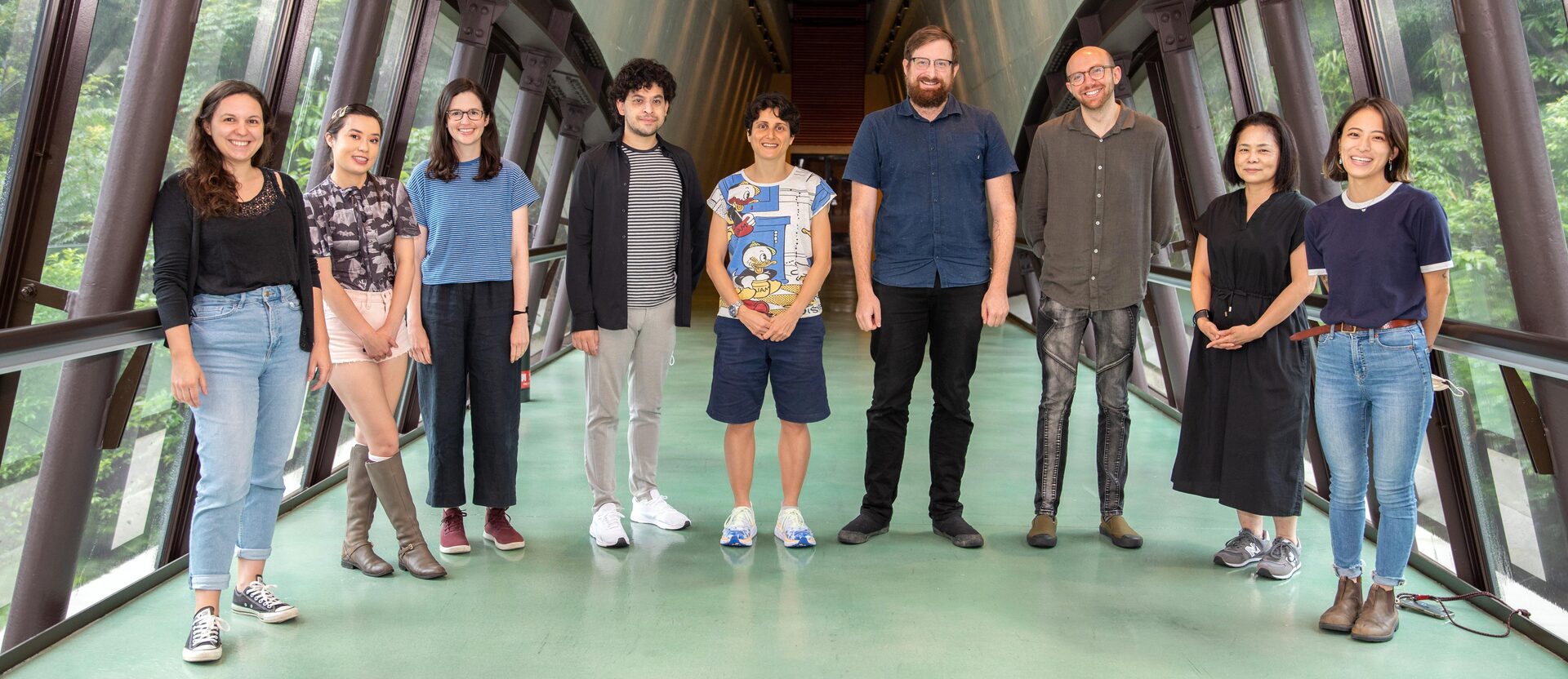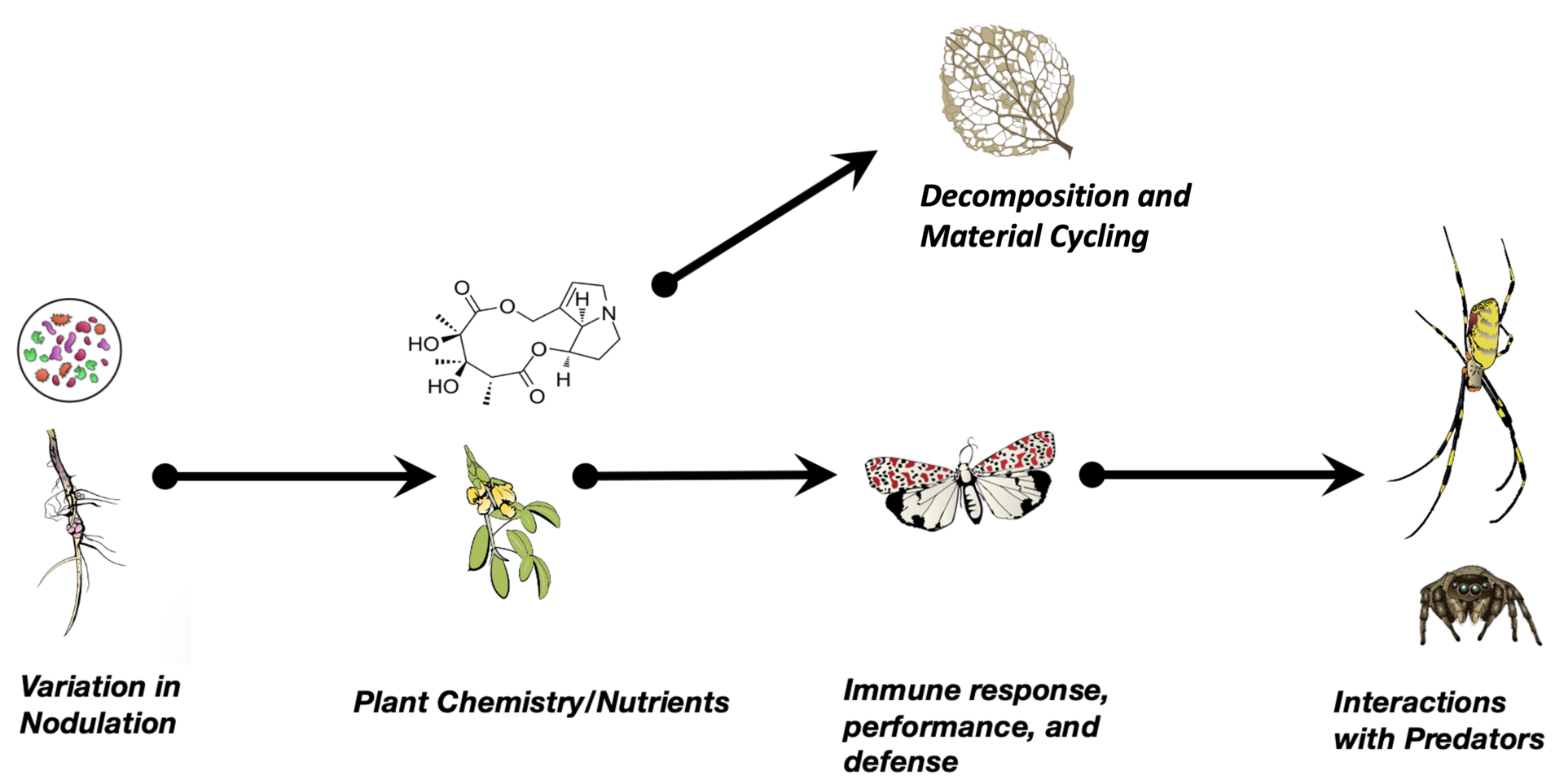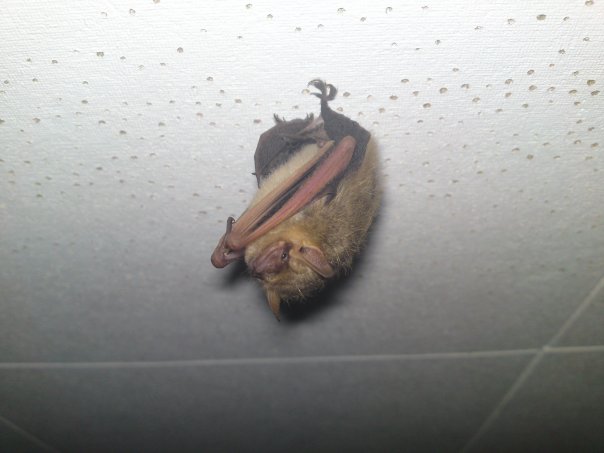FY2021 Annual Report
Integrative Community Ecology Unit
Assistant Professor David Armitage

Abstract
Most of our planet's ecosystems are currently impacted by habitat loss, emerging pathogens, globalization, and climate change. The results of these stressors can re-shuffle the species interactions upon which biodiversity and human wellbeing rely. Our unit merges theory, genetics, and chemistry to understand how species interactions vary over space and time and to affect ecosystem structure and functioning.
1. Staff
- Dr. David Armitage, PI
- Nonno Hasegawa, Graduate Student
- Rahel Ruppli, Graduate Student
- Dr. Su'ad Yoon, Postdoctoral Researcher
- Dr. Samuel Ross, Postdoctoral Researcher
- Arno Hagenbeek, Graduate Student (Rotation)
- Zhuli Cheng, Graduate Student (Rotation)
- Camila Rayo, Intern
- Mika Takahashi, Intern
- Katharine Saunders, Unit Technician
- Shizuka Kuda, Research Unit Administrator
2. Collaborations
2.1 Rapid disruption of plant-pollinator matching under climate warming
- Type of collaboration: Joint research
- Researchers:
- Professor Tingfa Dong, China West Normal University
2.2 Metagenomics of the Azolla-Cyanobacteria nitrogen-fixing symbiosis
- Type of collaboration: Joint research
- Researchers:
- Joint Genome Institute (Department of Energy), Berkeley, CA
2.3 Developing response diversity as an integrative measure of ecosystem stability
- Type of collaboration: Joint research
- Researchers:
- Professor Owen Petchey, University of Zurich
- Professor Takehiro Sasaki, Yokohama National University
3. Activities and Findings
3.1 Lab Setup
The ICE unit was started in late 2021, and we have been setting up an operationa laboratory space for molecular, microbial, and plant ecology. Alongside the wet lab space, we also have a climate-controlled storage shed equipped with plant growth lights, a small greenhouse on campus, and four climate-controlled plant growth chambers.



3.2 Causes and consequences of phytochemical variation
 This project, funded through a combination of JSPS Early-Career Kakenhi and JSPS Postdoctoral Fellowships, seeks to understand how variation in plant secondary chemistry affects interactions at other trophic levels. We are focusing on the plant genus Crotalaria, which fixes nitrogen from the atmosphere with the aid of the symbiotic root-nodulating bacteria, Bradyrhizobium. The plant also produces copious concentrations of pyrrolizidine alkaloid chemicals, which are highly toxic to many would-be herbivores. We are investigating how variation in the symbiotic microbial partnership influences alkaloid production by the host plant, and how this variation in alkaloid concentrations influence the communities of herbivores, decomposers, and predators that associate with the plant.
This project, funded through a combination of JSPS Early-Career Kakenhi and JSPS Postdoctoral Fellowships, seeks to understand how variation in plant secondary chemistry affects interactions at other trophic levels. We are focusing on the plant genus Crotalaria, which fixes nitrogen from the atmosphere with the aid of the symbiotic root-nodulating bacteria, Bradyrhizobium. The plant also produces copious concentrations of pyrrolizidine alkaloid chemicals, which are highly toxic to many would-be herbivores. We are investigating how variation in the symbiotic microbial partnership influences alkaloid production by the host plant, and how this variation in alkaloid concentrations influence the communities of herbivores, decomposers, and predators that associate with the plant.
Human modification of natural ecosystems often results in the reshaping of local plant communities, either through agricultue, horticulture, or inadvertent introductions. We are currently in the process of developing high-throughput protocols to characterise the diversity and complexity of Okinawa's phytochemical landscape in order to better understand the effects of human land use on the chemical properties of local plant communities.

3.3 Spatial population genetics of interacting species
Plant-animal interactions are often asymmetric. That is, one partner (usually the animal) relies completely on the plant for food or shelter, while the plant does not require, or is harmed by, the actions of the animal. In cases like these, the evolutionary maintenance of this association requires that animal partners be able to successfully locate and migrage between populations of the host plants. When host plants are rare, however, this task is particularly challenging. Our goal is to use the tools of landscape genetics to identify how barriers to gene flow between populations manifest for the various symbiotic partners. Do the plant and its obligate symbionts show concordant patterns of gene flow, or are they different based on each species' particular dispersal traits? Further, does the genetic connectivity of these animals' populations decline near their host's range margin, leaving these populations less able to acclimate or adapt to environmental change? To empirically test these questions, we use the carnivorous pitcher plant Darlingtonia califorica and the midge and mite species that are found inside of its pitcher leaves to map and compare gene flow networks of interacting species across the landscapes of California and Oregon in the United States.

3.4 Bat evolutionary ecoimmunology
The immune systems of bats are unique among mammals in their ability to prevent inflammation arising from infection with pathogens. This may be one reason why bats can serve as asymptomatic reservoirs for many diseases that eventually jump to humans, including hemorragic fevers and coronaviruses. Led by our resident immunologist, we are developing a molecular method to capture and sequence the 'immunome' — or the set of all immune genes — across all major bat groups. Once completed, this tool will be deployed on museum-preserved bat tissue specimens to investigate questions pertaining to the effects of geography (e.g., latitude) and life history traits (e.g., group living, migration, etc.) on the evolution the bat immune system.

roost (abandonded bomb shelter).
3.4 Response diversity as a predictor of ecosystem stability
In collaboration with researchers at the University of Zurich and Yokohama National University, we have developed a method for quantifying 'response diversity' across any group of organisms. Response diversity can be understood as the range of responses exhibited by members of an ecological community following some kind of environmental change or perturbation. We are now starting experiments using freshwater plant communities to investigate the role of response diversity in shaping overall stability of important ecosystem functions (biomass production, carbon capture, etc.) following stressors such as eutrophication and climatic warming.

3.5 Azolla-cyanobacteria symbiosis
This ongoing project involves the characterization of bacterial symbionts associated with the aquatic fern genus Azolla. The tiny leaves of these plants are hollow and contain a nitrogen-fixing symbiotic cyanobacterium. Importantly, these symbionts are among the only known N-fixing symbionts that are transferred from parents to offspring, and have therefore diversified alongside their host plants. Using a globally-spanning germplasm collection of the plants, we have successfully sequenced and assembled the genomes of these symbionts from 24 geographically-distinct Azolla strains and have found that they all undergone dramatic reductions in their functional genomic repetoire, rendering a large proportion of their genes obsolete (compared to their nearest free-living relatives).

4. Publications
4.1 Journals
- Ross, S.RP-J; Petchey, O.L; Sasaki, T.; Armitage, D.W. How to measure response diversity. bioRxiv preprint. doi: 10.1101/2022.04.26.489626
4.2 Books and other one-time publications
Nothing to report
4.3 Oral and Poster Presentations
- Su'ad Yoon, Native host plant use buffers against the deleterious effects of viral infection in the butterfly Lycaeides melissa , Annual Meeting of the Ecological Society of Japan, March 2022
- Samuel Ross, Land use shapes ecological resilience to typhoons, Annual Meeting of the Ecological Society of Japan, March 2022
- David Armitage, Coexistence theory as a nexus for linking competition and biogeography , Annual Meeting of the Ecological Society of Japan, March 2022
- David Armitage, The importance of biodiversity to the health of individuals and ecosystems, OIST Science Challenge (Outreach Event), March 2022
- David Armitage, Context-dependence and generality in community ecology - two sides of the same coin?, OIST Faculty Lunchtime Seminar, February 2022
5. Intellectual Property Rights and Other Specific Achievements
External funding by unit members:
- JSPS Postdoctoral Research fellowship (Dr. Su'ad Yoon, FY2022-2024)
- Canon Fellowship (Dr. Samuel Ross, FY2021-2023)
- JSPS Grant-in-Aid for Early-Career Scientists (PI Armitage, FY 2022-2024)
- Joint Genome Institute Community Science Program (Dr. Su'ad Yoon, FY2022-2024)
6. Teaching
- David Armitage taught a semester-long course in Modern Statistics for Biology
7. Meetings and Events
Nothing to report
8. Other
- Best English Presentation Award (Dr. Sam Ross, Ecological Society of Japan Annual Meeting)
- Television appearance by Nonno Hasegawa to discuss her research: “新春!爆笑アカデミー!!鶴瓶&さまぁ〜ずのぶっとび博士研究所” 2022/1/3 TBS channel (nationwide)



